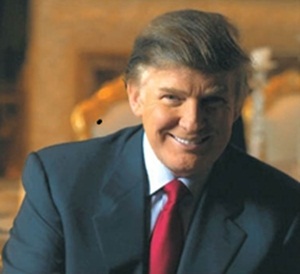The US and China on Friday announced that they reached a phase-one trade deal under which the US will halve its 15 per cent tariff on about $120 billion in Chinese goods in return for China lifting a ban on US farm goods.

The Phase 1 deal, arrived at between US, China to halt trade war, will include a dispute-resolution mechanism that will serve as the enforcement arm.
Beijing has agreed to import at least $200 billion worth of additional US goods and services over the next two years on top of the amount it purchased in 2017, top US trade representative Robert Lighthizer has said last month.
If the purchases are made, they would represent a huge jump in US exports to China. China bought $130 billion in American goods in 2017 before the trade war began, and $56 billion in services, data from the US Bureau of Economic Analysis show.
Lighthizer and his counterpart Vice Premier Liu He will likely do the signing in Washington.
Lighthizer said it’s an important step forward for the two countries, while acknowledging that a lot of big issues are outstanding and need to be addressed in future negotiations.
As part of the deal, the US will halve its 15 per cent tariff on about $120 billion in Chinese goods. It will also suspend indefinitely planned duties that were set to take effect on Sunday that would have covered consumer favorites such as smart phones and laptops.
That leaves roughly $250 billion taxed at 25 per cent and $120 billion that will be subject to a 7.5 per cent duty once the agreement takes effect. Any further tariff reductions by the US will be linked to the conclusion of future phases, Lighthizer said.
China, on the other hand, didn’t agree to specific tariff reductions in the deal. Instead, the nation’s obligation is to make the purchases and to have an exclusion process for its tariffs. The country has in recent months lowered some retaliatory tariffs including some on cars imported from the US.
According to the US, China has agreed to increase its total purchases of US goods and services by at least $200 billion over the next two years. Also included is a commitment by China to increase its buying of US agricultural products to $40 billion to $50 billion in each of the next two years. “These are numbers that are realistic and that we arrived at together," Lighthizer told reporters.
The specific breakdown of targets for individual commodities will be classified and not disclosed to the public.
The deal will center around what a senior administration official called “state-of-the-art" IP commitments and a breakthrough on forced technology transfer. Those issues are also at the heart of an investigation that led President Donald Trump to raise tariffs on China in the first place.
Among the specific commitments USTR announced Friday: China has agreed to end its long-standing practice of forcing or pressuring foreign companies to transfer their technology to Chinese companies as a condition for obtaining market access, administrative approvals, or receiving advantages from the government. China also commits to provide transparency, fairness, and due process in administrative proceedings and to have technology transfer and licensing take place on market terms.
The agreement will include a dispute-resolution mechanism that will serve as the enforcement arm. That process is in line with how other US trade agreements are enforced. Complaints of one party will be brought to a US-China working group and if officials can’t resolve their dispute, a decision will be made at the ministerial level of what action to take. That action could include tariffs or other measures, Lighthizer said, though he sounded optimistic that he thinks China will keep their promises.
Lawyers are now reviewing the text so that it’s ready to be signed in the first week of January. It’s also being translated. Lighthizer and his counterpart Vice Premier Liu He will likely do the signing in Washington. Once it’s inked, the deal will take effect roughly 30 days later.
The two countries also agreed to start negotiations for the next phase immediately after the Phase 1 deal is signed.
The first phase leaves some contentious issues unresolved, including US demands that China curb subsidies to state-owned firms. The US says future talks will also focus on digital trade, data localisation, cross-border data flows and cyber intrusions.























